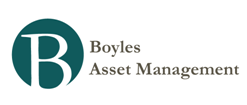Money and Finance
From the book 100 to 1 in the stock market. Remember this was published in 1972.
- Richard Duncan Quotes
Longer excerpt from The New Depression (taken from my Kindle highlights, so the excerpts aren't necessarily the paragraphs I have put them in below, and there may be things in between that I didn't highlight). “The amount...
- The Nixon Shock - By Roger Lowenstein
Found via the Corner of Berkshire & Fairfax. How Nixon stopped backing the dollar with gold and changed global finance, a 40-year-old decision that still echoes in Greece, Ireland, and the U.S. “Inauguration Day was cloudy, grim,” wrote Arthur...
- Hussman Weekly Market Comment: The Recklessness Of Quantitative Easing
Risk without benefitDespite the probable lack of measureable benefits, further QE poses significant risks. It has already triggered a steep decline in the exchange value of the U.S. dollar, and threatens a destabilization of international economic activity,...
- Howard Marks Memo: Tell Me I’m Wrong
My readers treat me well. They indulge my penchant for dissecting the past, and they send kind messages of encouragement. To repay their generosity, I’m going to venture into something I usually avoid: the future of the U.S. economy. This memo won’t...
- Is The Medicine Worse Than The Illness? - By James Grant
Barely nudging Mr. Madoff out of the top of the news was the Federal Reserve's announcement last Tuesday that it intends to debase its own paper money. The year just ending has been a time of confusion as much as it has been of loss. But here, at...
Money and Finance
Thomas W. Phelps quote (inflation)
From the book 100 to 1 in the stock market. Remember this was published in 1972.
In one sense fiat is a factor even in the absence of controls. On every piece of paper money in your pocket are two phrases. One is “In God we trust.” The other, sadly much more significant these days, says “This note is legal tender for all debts, public and private.” What that means is that the creditor must accept payment in such notes whether he likes to or not. A creditor who lent dollars payable in gold of specified weight and fineness might otherwise refuse payment in notes redeemable in nothing.
Habit, or the rigidity of our social system, slows down changes in the purchasing power of money but does not determine its value. If by some magic you could cut the value of all money in half overnight, not all prices could double the next day because it would take time to adjust to the new price level. Until wages and prices were raised many people simply would be unable to pay twice as much as before for rent and food. Others, for a while, would accept money at the old value by force of habit. Ultimately the basic factors would prevail.
Internationally, so long as our Government continued able and willing to meet all central bank demands for gold—or its IMF equivalent—at $35 to the ounce, the inherent value of our money was assured. But foreign claims on our gold so far exceeded our reserves that maintenance of a reasonable balance of payments was imperative. This meant both that we must not price our exports out of foreign markets, nor unduly indulge our tastes for foreign goods and foreign travel. When for the first time since 1893 our imports for 1971 threatened to exceed our exports, the jig was up.
The Nixon Administration sought to stabilize the buying power of the dollar by balancing the budget and slowing down the money printing press. Interest rates and unemployment increased sharply. And prices continued to rise. To lower interest rates the Federal Reserve bought government securities—with printing press money. That was inflationary. To combat unemployment the Administration budgeted a huge deficit and proposed tax cuts. Those moves too were inflationary. To counter those effects the President invoked the wage and price freeze.
The situation recalls Victor Hugo’s story. You may remember, the Good Lord created a mouse.
“What ho!” he cried. “I’ve made a mistake.” So he created a cat to correct it. President Nixon’s freeze is the cat. We can all join in praying that it does not grow into a man-eating tiger.
Basically the problem arises out of our desire as a people to do inflationary things without having inflation. So far no one has invented a pill to make that possible.
- Richard Duncan Quotes
Longer excerpt from The New Depression (taken from my Kindle highlights, so the excerpts aren't necessarily the paragraphs I have put them in below, and there may be things in between that I didn't highlight). “The amount...
- The Nixon Shock - By Roger Lowenstein
Found via the Corner of Berkshire & Fairfax. How Nixon stopped backing the dollar with gold and changed global finance, a 40-year-old decision that still echoes in Greece, Ireland, and the U.S. “Inauguration Day was cloudy, grim,” wrote Arthur...
- Hussman Weekly Market Comment: The Recklessness Of Quantitative Easing
Risk without benefitDespite the probable lack of measureable benefits, further QE poses significant risks. It has already triggered a steep decline in the exchange value of the U.S. dollar, and threatens a destabilization of international economic activity,...
- Howard Marks Memo: Tell Me I’m Wrong
My readers treat me well. They indulge my penchant for dissecting the past, and they send kind messages of encouragement. To repay their generosity, I’m going to venture into something I usually avoid: the future of the U.S. economy. This memo won’t...
- Is The Medicine Worse Than The Illness? - By James Grant
Barely nudging Mr. Madoff out of the top of the news was the Federal Reserve's announcement last Tuesday that it intends to debase its own paper money. The year just ending has been a time of confusion as much as it has been of loss. But here, at...

